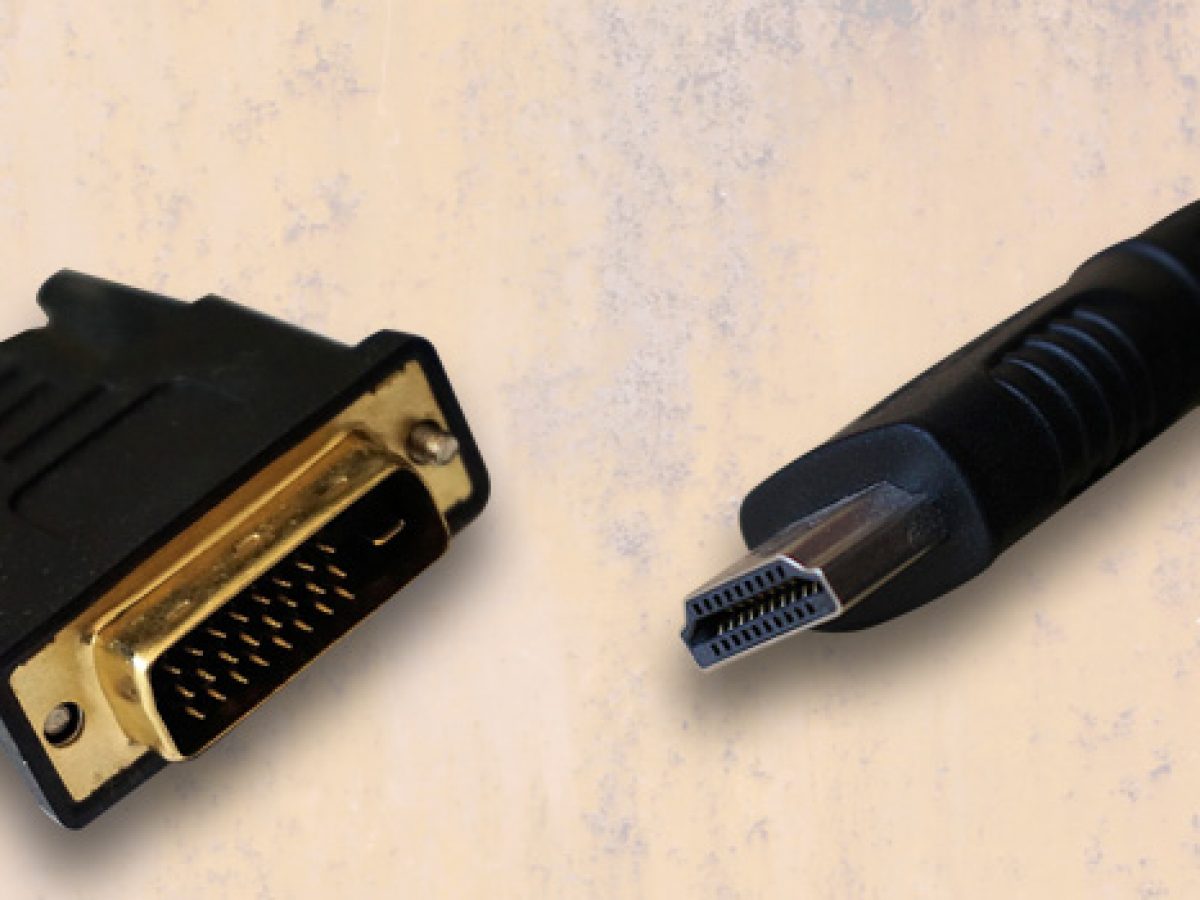
At 4K and 30Hz refresh rate, DisplayPort 1.0 (and later), HDMI 1.3 (and later), and dual-link DVI will work.Ģ. At 1440P and a 144Hz+ refresh rate, DisplayPort 1.2 (and later) and HDMI 2.0 (and later) will work. At 1440P and a 60Hz refresh rate, DisplayPort, HDMI, and dual-link DVI will work.Ģ. So, let’s just run down the different scenarios and which interfaces will work with them. However, when you bring refresh rates into the fold, your options will narrow a bit.Īnd, really, it’s at these higher resolutions and higher refresh rates where the different versions of HDMI and DisplayPort need to be considered.


DisplayPort vs HDMI vs DVI for 1440P and 4K Gamingįor higher resolution gaming, namely 1440P and 4K (really, there aren’t a lot of people gaming at higher than 4K) any of DisplayPort, HDMI, or DVI (dual-link) will work.
#HDMI STB VS.DVI 1080P#
And, so, if you already have a 1080P monitor and a DVI/HDMI/DisplayPort cable, keep using that as long as your graphics card has a DVI/HDMI/DisplayPort port on it. So, the reality here is that for basic 1080P gaming, any of these interfaces will work. You’ll need a dual-link DVI cable in order to use the DVI interface to push a 1080P 144Hz display. It’s important to note, though, that a single-link DVI cable will not support a 144Hz refresh rate at 1080P resolution. While DVI doesn’t have as extensive support for ultra-high definition resolutions as DisplayPort and HDMI do, it can handle 1080P gaming just fine.Īnd, even if you want to game on a 1080P 144Hz monitor, all three of these interfaces will work. In terms of standard 1080P 60Hz monitors, all three of the common display interfaces are viable options. DisplayPort vs HDMI vs DVI For 1080P Gaming

DVI does have two different formats, single-link, and dual-link, and of the two, dual-link has a bit more flexibility in what it can support (we’ll discuss that in a moment). As a result, DVI is likely in its latter stages as a commonly used display interface. And, while it is worth mentioning as one of the more common display interfaces, the reality is is that in comparison to what HDMI and DisplayPort offer, there really isn’t anything that DVI brings to the table that the other two don’t. Unlike HDMI and DisplayPort, DVI only transfers video data. DVIĭVI, which stands for Digital Visual Interface, is another common display interface. HDMI comes in three different formats: Type A (standard), Type B (mini-HDMI), and Type C (micro-HDMI). While, in the past, HDMI lagged behind DisplayPort in the maximum resolution it supported (and the maximum refresh rate it could deliver at higher resolutions), with the release of HDMI 2.1, HDMI currently now support displays with as high as 10K resolution, and it can also support 4K displays that have a refresh rate up to 240Hz. HDMI, which stands for High-Definition Multimedia Interface, is an interface that is capable of transferring both video and audio data from a video/audio source to a display or audio output device. DisplayPort comes in both standard DisplayPort format and mini-DisplayPort format. DisplayPort can support displays up to 8K resolution and 4K monitors with refresh rates as high as 240Hz. However, DisplayPort can also transfer audio data, USB data, and other forms of data as well. The DisplayPort interface’s primary function is to, obviously, connect a video source to a display device.
#HDMI STB VS.DVI PC#
The DisplayPort interface is the result of a bunch of manufacturers in the PC hardware and peripheral industry getting together to create a display interface that would replace the DVI and VGA interfaces and help them avoid the royalty fees associated with using HDMI ports. Quick Overviews of Each Display Interfaceīefore we dive into the different scenarios where the three common digital display interfaces will (or won’t) make sense to use, let’s first give a brief overview of each. So, in this guide, we’re going to go over the main differences between DisplayPort, HDMI, and DVI and how those differences can affect your gaming experience. Nowadays, though, choosing the wrong display interface can actually limit the quality of the picture your display will be able to output in certain scenarios.

With the recent surge of high-resolution and high-refresh-rate monitors hitting the market, choosing the right cable to use to connect your computer (or, graphics card) to your monitor has never been more important of a task.įour-to-five years ago, when higher resolution gaming was rare and higher refresh rate monitors weren’t as prevalent, any of the three common display interfaces (DVI, HDMI, & DisplayPort) would be a viable option to use to hook up your monitor to your computer. However, each display interface works a little bit differently and, in this guide, we cover those differences and how they will impact your system when gaming. DisplayPort, HDMI, & DVI are all standard methods of connecting your computer to your monitor.


 0 kommentar(er)
0 kommentar(er)
